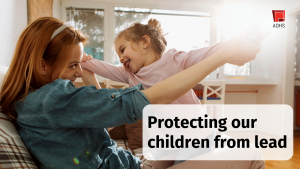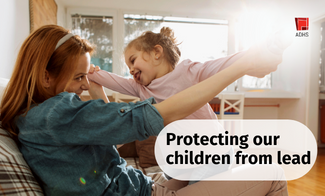 Many people wrongly believe that because much of the housing in Arizona was built after lead-based paint was banned in 1978, lead poisoning is not a concern in our state. It’s important to know there are several sources of lead in the environment beyond lead-based paint.
Many people wrongly believe that because much of the housing in Arizona was built after lead-based paint was banned in 1978, lead poisoning is not a concern in our state. It’s important to know there are several sources of lead in the environment beyond lead-based paint.
Here’s a real-world example: A 1-year-old child in Arizona was found to have a blood lead level four times higher than the Centers for Disease Control and Prevention considers safe. The ADHS lead poisoning prevention team conducted an environmental investigation of the family’s home to help the family identify the source of the child’s lead exposure.
During the investigation, the team collected some spices the family frequently consumed and had them tested at the state lab. One of the spices – turmeric – had an extremely high lead concentration. When the family disposed of the spice, the child’s blood lead level began to decrease.
Regulations such as the ban on lead-based paint and the removal of lead from gasoline in the 1970s have led to a general decline in lead exposure. Despite that, lead poisoning remains a considerable public health concern, especially for children who live with adults who work with lead, or who live in housing built before 1978.
But the truth is that anyone could be exposed to lead.
Lead can be found in certain foods, cosmetics, and traditional medicines imported from other countries. You cannot tell if a food, candy, spice, medicine, or cosmetic contains lead by looking at or tasting it. Other sources of lead to consider include soil, dust, dishes that contain lead, drinking water, or jobs and hobbies with potential lead exposure.
Young children are particularly vulnerable to the toxic effects of lead. There is evidence that childhood exposure to lead can cause long-term harm. According to the CDC, exposure to lead can seriously harm a child’s health and cause well-documented adverse effects such damage to the brain and nervous system, slowed growth and development, and problems with learning, behavior, hearing and speech. That can result in a lower IQ, decreased ability to pay attention, and underperforming in school.
What can parents do to prevent lead poisoning? Have your child tested by their health care provider at 12 and 24 months. A blood test is the only way to know if a child has been exposed to lead. Keeping play areas clean and dust-free, and washing your child’s hands as well as toys, bottles, and pacifiers can help reduce exposure in your home.
More information on reducing lead-related risks are available on our azhealth.gov/lead. Still have questions? Please email us at [email protected].










